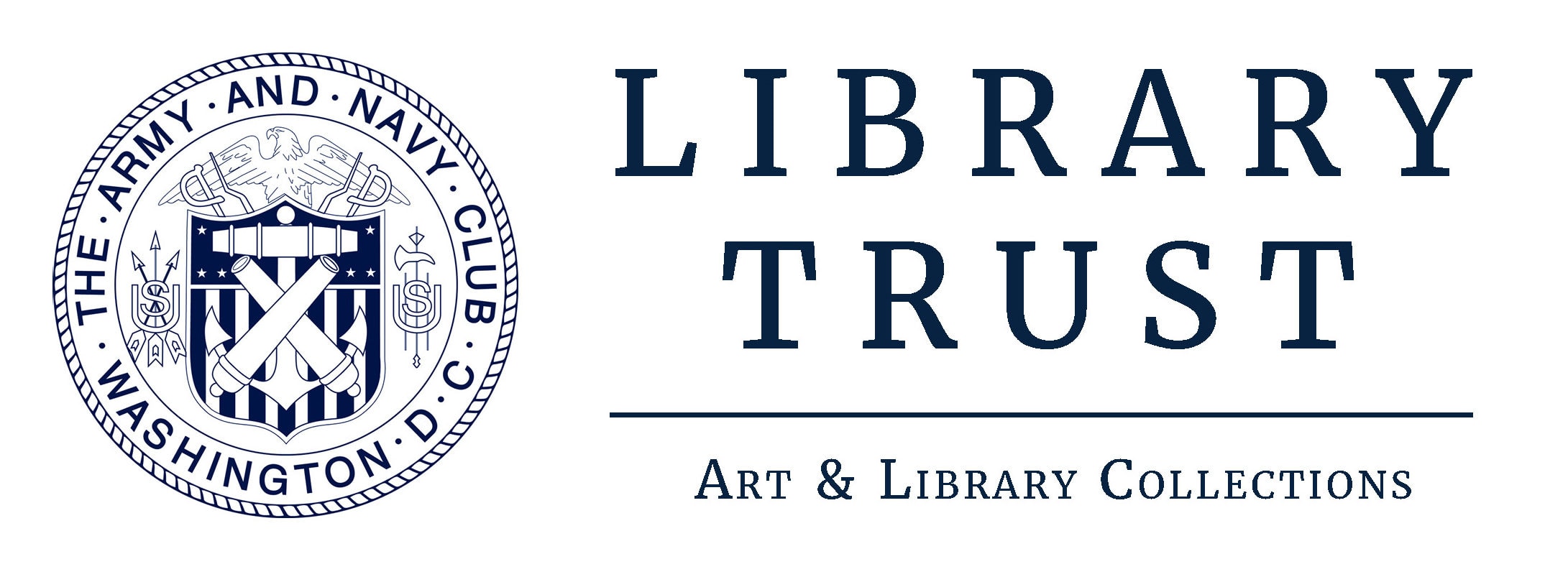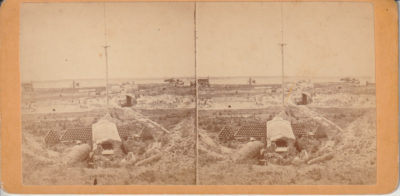Interior view of Fort Moultrie, Charleston, South Carolina
Special Collection:
02: South Carolina, Charleston, Box 2, Civil War Stereographs
Accession number:
1983.02.02.42
Maker:N/A
Historical period:
ca. 1865
Wars and Conflicts:
Civil War
Type:
Stereograph
Dimensions:
H x W: 3.5 in. / 7 in.
Acquisition date:
1983-1987
Credit line:
Gift of Reginald W. Okie
Location:
Library, Third Floor
Provenance:
From 1985:
The Army and Navy Club, gift of Reginald W. Okie
Label:
verso: No. 44
Interior view of Fort Moultrie, Charleston, S.C.
Fort Moultrie, immediately after the surrender of Fort Sumter, was put in a complete order by the Confederates, and furnished with a heavy armament. Previous to the commencement of the hostilities, which finally culminated into a bloody civil war of unexampled severity, the Fort was regularly garrisoned by United States Troops. In fact, it was the headquarters of the forces stationed in Charleston harbor. It is about 1,700 yards from Fort Sumter. It mounted one tier of guns en barbette. Its armament consisted of sixteen 24-pounders, fourteen 32-pounders, ten 8-inch Columbiads, five 8-inch sea coast howitzers, and seven field pieces. Its location was such that it exercised a very good command over the approaches to the harbor from the sea. Major Anderson abandoned Fort Moultrie on the 26th December 1860, and transferred his garrison to Fort Sumter. Before doing so, however, he spiked the guns in the Fort, and destroyed the gun carriages. This change of base on the part of Gen. Anderson threw the whole community of Charleston, in fact of all the Southern states, into intense excitement, and greatly embittered the feeling that had already taken possession of the public mind. The act was looked upon as a violation of faith, as there was a mutual understanding between the State of South Carolina and the General Government, binding both parties to refrain from acts of hostile nature. Fort Moultrie was occupied by four volunteer Artillery Companies (the Washington Artillery, German artillery, LaFayette Artillery, and Marion Artillery), the day following its evacuation, under the command of Colonel (now General) Wilmot G. DeSaussure. There is a singular coincidence connected with the occupancy of the Fort by the Companies above named worthy of record. It is as follows: the first flag hoisted upon its ramparts was the Palmetto ensign of the Steamer General Clinch. Major Anderson being the son-in-law of the distinguished Georgian from whom the Steamer was named. The General Clinch was the transport which conveyed the volunteer forces to Sullivan’s Island. The flag-staff, as seen in the picture, was situated in the middle of the Fort enclosure.

